- Home
- Herman Melville
Typee: A Romance of the South Seas Page 2
Typee: A Romance of the South Seas Read online
Page 2
INTRODUCTION TO THE EDITION OF 1892
By Arthur Stedman
OF the trinity of American authors whose births made the year 1819 anotable one in our literary history,--Lowell, Whitman, and Melville,--itis interesting to observe that the two latter were both descended, onthe fathers' and mothers' sides respectively, from have families ofBritish New England and Dutch New York extraction. Whitman and VanVelsor, Melville and Gansevoort, were the several combinations whichproduced these men; and it is easy to trace in the life and characterof each author the qualities derived from his joint ancestry. Here,however, the resemblance ceases, for Whitman's forebears, while worthycountry people of good descent, were not prominent in public or privatelife. Melville, on the other hand, was of distinctly patrician birth,his paternal and maternal grandfathers having been leading characters inthe Revolutionary War; their descendants still maintaining a dignifiedsocial position.
Allan Melville, great-grandfather of Herman Melville, removed fromScotland to America in 1748, and established himself as a merchantin Boston. His son, Major Thomas Melville, was a leader in the famous'Boston Tea Party' of 1773 and afterwards became an officer in theContinental Army. He is reported to have been a Conservative in allmatters except his opposition to unjust taxation, and he wore theold-fashioned cocked hat and knee-breeches until his death, in 1832,thus becoming the original of Doctor Holmes's poem, 'The Last Leaf'.Major Melville's son Allan, the father of Herman, was an importingmerchant,--first in Boston, and later in New York. He was a man of muchculture, and was an extensive traveller for his time. He married MariaGansevoort, daughter of General Peter Gansevoort, best known as 'thehero of Fort Stanwix.' This fort was situated on the present site ofRome, N.Y.; and there Gansevoort, with a small body of men, held incheck reinforcements on their way to join Burgoyne, until the disastrousending of the latter's campaign of 1777 was insured. The Gansevoorts, itshould be said, were at that time and subsequently residents of Albany,N.Y.
Herman Melville was born in New York on August 1,1819, and receivedhis early education in that city. There he imbibed his first love ofadventure, listening, as he says in 'Redburn,' while his father 'ofwinter evenings, by the well-remembered sea-coal fire in old GreenwichStreet, used to tell my brother and me of the monstrous waves at sea,mountain high, of the masts bending like twigs, and all about Havreand Liverpool.' The death of his father in reduced circumstancesnecessitated the removal of his mother and the family of eight brothersand sisters to the village of Lansingburg, on the Hudson River. ThereHerman remained until 1835, when he attended the Albany Classical Schoolfor some months. Dr. Charles E. West, the well-known Brooklyn educator,was then in charge of the school, and remembers the lad's deftness inEnglish composition, and his struggles with mathematics.
The following year was passed at Pittsfield, Mass., where he engaged inwork on his uncle's farm, long known as the 'Van Schaack place.' Thisuncle was Thomas Melville, president of the Berkshire AgriculturalSociety, and a successful gentleman farmer.
Herman's roving disposition, and a desire to support himselfindependently of family assistance, soon led him to ship as cabin boyin a New York vessel bound for Liverpool. He made the voyage, visitedLondon, and returned in the same ship. 'Redburn: His First Voyage,'published in 1849, is partly founded on the experiences of this trip,which was undertaken with the full consent of his relatives, and whichseems to have satisfied his nautical ambition for a time. As told in thebook, Melville met with more than the usual hardships of a sailor-boy'sfirst venture. It does not seem difficult in 'Redburn' to separate theauthor's actual experiences from those invented by him, this being thecase in some of his other writings.
A good part of the succeeding three years, from 1837 to 1840, wasoccupied with school-teaching. While so engaged at Greenbush, nowEast Albany, N.Y., he received the munificent salary of 'six dollarsa quarter and board.' He taught for one term at Pittsfield, Mass.,'boarding around' with the families of his pupils, in true Americanfashion, and easily suppressing, on one memorable occasion, the effortsof his larger scholars to inaugurate a rebellion by physical force.
I fancy that it was the reading of Richard Henry Dana's 'Two YearsBefore the Mast' which revived the spirit of adventure in Melville'sbreast. That book was published in 1840, and was at once talked ofeverywhere. Melville must have read it at the time, mindful of hisown experience as a sailor. At any rate, he once more signed a ship'sarticles, and on January 1, 1841, sailed from New Bedford harbour in thewhaler Acushnet, bound for the Pacific Ocean and the sperm fishery.He has left very little direct information as to the events of thiseighteen months' cruise, although his whaling romance, 'Moby Dick; or,the Whale,' probably gives many pictures of life on board the Acushnet.In the present volume he confines himself to a general account ofthe captain's bad treatment of the crew, and of his non-fulfilment ofagreements. Under these considerations, Melville decided to abandon thevessel on reaching the Marquesas Islands; and the narrative of 'Typee'begins at this point. However, he always recognised the immenseinfluence the voyage had had upon his career, and in regard to itsresults has said in 'Moby Dick,'--
'If I shall ever deserve any real repute in that small but high hushedworld which I might not be unreasonably ambitious of; if hereafter Ishall do anything that on the whole a man might rather have done than tohave left undone... then here I prospectively ascribe all the honourand the glory to whaling; for a whale-ship was my Yale College and myHarvard.'
The record, then, of Melville's escape from the Dolly, otherwise theAcushnet, the sojourn of his companion Toby and himself in the TypeeValley on the island of Nukuheva, Toby's mysterious disappearance, andMelville's own escape, is fully given in the succeeding pages; and rashindeed would he be who would enter into a descriptive contest with theseinimitable pictures of aboriginal life in the 'Happy Valley.' So greatan interest has always centred in the character of Toby, whose actualexistence has been questioned, that I am glad to be able to declare himan authentic personage, by name Richard T. Greene. He was enabled todiscover himself again to Mr. Melville through the publication of thepresent volume, and their acquaintance was renewed, lasting for quitea long period. I have seen his portrait,--a rare old daguerrotype,--andsome of his letters to our author. One of his children was named for thelatter, but Mr. Melville lost trace of him in recent years.
With the author's rescue from what Dr. T. M. Coan has styled his'anxious paradise,' 'Typee' ends, and its sequel, 'Omoo,' begins. Here,again, it seems wisest to leave the remaining adventures in the SouthSeas to the reader's own discovery, simply stating that, after a sojournat the Society Islands, Melville shipped for Honolulu. There he remainedfor four months, employed as a clerk. He joined the crew of the Americanfrigate United States, which reached Boston, stopping on the way at oneof the Peruvian ports, in October of 1844. Once more was a narrativeof his experiences to be preserved in 'White Jacket; or, the World ina Man-of-War.' Thus, of Melville's four most important books, three,'Typee,' 'Omoo,' and 'White-Jacket,' are directly auto biographical,and 'Moby Dick' is partially so; while the less important 'Redburn' isbetween the two classes in this respect. Melville's other prose works,as will be shown, were, with some exceptions, unsuccessful efforts atcreative romance.
Whether our author entered on his whaling adventures in the South Seaswith a determination to make them available for literary purposes, maynever be certainly known. There was no such elaborate announcement oradvance preparation as in some later cases. I am inclined to believethat the literary prospect was an after-thought, and that this insureda freshness and enthusiasm of style not otherwise to be attained.Returning to his mother's home at Lansingburg, Melville soon began thewriting of 'Typee,' which was completed by the autumn of 1845. Shortlyafter this his older brother, Gansevoort Melville, sailed for Englandas secretary of legation to Ambassador McLane, and the manuscript wasintrusted to Gansevoort for submission to John Murray. Its immediateacceptance and publication followed in 1846. 'Typee' was dedicated toChief Justice Lemuel Shaw of M
assachusetts, an old friendship betweenthe author's family and that of Justice Shaw having been renewed aboutthis time. Mr. Melville became engaged to Miss Elizabeth Shaw, the onlydaughter of the Chief Justice, and their marriage followed on August 4,1847, in Boston.
The wanderings of our nautical Othello were thus brought to aconclusion. Mr. and Mrs. Melville resided in New York City until 1850,when they purchased a farmhouse at Pittsfield, their farm adjoining thatformerly owned by Mr. Melville's uncle, which had been inherited by thelatter's son. The new place was named 'Arrow Head,' from the numerousIndian antiquities found in the neighbourhood. The house was so situatedas to command an uninterrupted view of Greylock Mountain and theadjacent hills. Here Melville remained for thirteen years, occupiedwith his writing, and managing his farm. An article in Putnam's Monthlyentitled 'I and My Chimney,' another called 'October Mountain,' and theintroduction to the 'Piazza Tales,' present faithful pictures of ArrowHead and its surroundings. In a letter to Nathaniel Hawthorne, givenin 'Nathaniel Hawthorne and His Wife,' his daily life is set forth. Theletter is dated June 1, 1851.
'Since you have been here I have been building some shanties of houses(connected with the old one), and likewise some shanties of chapters andessays. I have been ploughing and sowing and raising and printing andpraying, and now begin to come out upon a less bristling time, and toenjoy the calm prospect of things from a fair piazza at the north of theold farmhouse here. Not entirely yet, though, am I without something tobe urgent with. The 'Whale' is only half through the press; for, weariedwith the long delays of the printers, and disgusted with the heatand dust of the Babylonish brick-kiln of New York, I came back to thecountry to feel the grass, and end the book reclining on it, if I may.'
Mr. Hawthorne, who was then living in the red cottage at Lenox, hada week at Arrow Head with his daughter Una the previous spring. It isrecorded that the friends 'spent most of the time in the barn, bathingin the early spring sunshine, which streamed through the open doors,and talking philosophy.' According to Mr. J. E. A. Smith's volume on theBerkshire Hills, these gentlemen, both reserved in nature, though nearneighbours and often in the same company, were inclined to be shy ofeach other, partly, perhaps, through the knowledge that Melville hadwritten a very appreciative review of 'Mosses from an Old Manse' for theNew York Literary World, edited by their mutual friends, the Duyckincks.'But one day,' writes Mr. Smith, 'it chanced that when they were out ona picnic excursion, the two were compelled by a thundershower to takeshelter in a narrow recess of the rocks of Monument Mountain. Two hoursof this enforced intercourse settled the matter. They learned so muchof each other's character,... that the most intimate friendship forthe future was inevitable.' A passage in Hawthorne's 'Wonder Book'is noteworthy as describing the number of literary neighbours inBerkshire:--
'For my part, I wish I had Pegasus here at this moment,' said thestudent. 'I would mount him forthwith, and gallop about the countrywithin a circumference of a few miles, making literary calls on mybrother authors. Dr. Dewey would be within ray reach, at the foot ofthe Taconic. In Stockbridge, yonder, is Mr. James [G. P. R. James],conspicuous to all the world on his mountain-pile of history andromance. Longfellow, I believe, is not yet at the Oxbow, else the wingedhorse would neigh at him. But here in Lenox I should find our mosttruthful novelist [Miss Sedgwick], who has made the scenery and lifeof Berkshire all her own. On the hither side of Pittsfield sits HermanMelville, shaping out the gigantic conception of his 'White Whale,'while the gigantic shadow of Greylock looms upon him from his studywindow. Another bound of my flying steed would bring me to the door ofHolmes, whom I mention last, because Pegasus would certainly unseat methe next minute, and claim the poet as his rider.'
While at Pittsfield, Mr. Melville was induced to enter the lecturefield. From 1857 to 1860 he filled many engagements in the lyceums,chiefly speaking of his adventures in the South Seas. He lecturedin cities as widely apart as Montreal, Chicago, Baltimore, and SanFrancisco, sailing to the last-named place in 1860, by way of CapeHorn, on the Meteor, commanded, by his younger brother, Captain ThomasMelville, afterward governor of the 'Sailor's Snug Harbor' at StatenIsland, N.Y. Besides his voyage to San Francisco, he had, in 1849 and1856, visited England, the Continent, and the Holy Land, partly tosuperintend the publication of English editions of his works, and partlyfor recreation.
A pronounced feature of Melville's character was his unwillingness tospeak of himself, his adventures, or his writings in conversation. Hewas, however, able to overcome this reluctance on the lecture platform.Our author's tendency to philosophical discussion is strikingly setforth in a letter from Dr. Titus Munson Coan to the latter's mother,written while a student at Williams College over thirty years ago,and fortunately preserved by her. Dr. Coan enjoyed the friendship andconfidence of Mr. Melville during most of his residence in New York. Theletter reads:--
'I have made my first literary pilgrimage, a call upon Herman Melville,the renowned author of 'Typee,' etc. He lives in a spacious farmhouseabout two miles from Pittsfield, a weary walk through the dust. But itas well repaid. I introduced myself as a Hawaiian-American, and soonfound myself in full tide of talk, or rather of monologue. But he wouldnot repeat the experiences of which I had been reading with rapture inhis books. In vain I sought to hear of Typee and those paradise islands,but he preferred to pour forth his philosophy and his theories oflife. The shade of Aristotle arose like a cold mist between myself andFayaway. We have quite enough of deep philosophy at Williams College,and I confess I was disappointed in this trend of the talk. But whata talk it was! Melville is transformed from a Marquesan to a gypsystudent, the gypsy element still remaining strong within him. And thiscontradiction gives him the air of one who has suffered from opposition,both literary and social. With his liberal views, he is apparentlyconsidered by the good people of Pittsfield as little better than acannibal or a 'beach-comber.' His attitude seemed to me something likethat of Ishmael; but perhaps I judged hastily. I managed to draw him outvery freely on everything but the Marquesas Islands, and when I left himhe was in full tide of discourse on all things sacred and profane. Buthe seems to put away the objective side of his life, and to shut himselfup in this cold north as a cloistered thinker.'
I have been told by Dr. Coan that his father, the Rev. Titus Coan, ofthe Hawaiian Islands, personally visited the Marquesas group, foundthe Typee Valley, and verified in all respects the statements madein 'Typee.' It is known that Mr. Melville from early manhood indulgeddeeply in philosophical studies, and his fondness for discussing suchmatters is pointed out by Hawthorne also, in the 'English Note Books.'This habit increased as he advanced in years, if possible.
The chief event of the residence in Pittsfield was the completion andpublication of 'Moby Dick; or, the Whale,' in 1851. How many young menhave been drawn to sea by this book is a question of interest. Meetingwith Mr. Charles Henry Webb ('John Paul') the day after Mr. Melville'sdeath, I asked him if he were not familiar with that author's writings.He replied that 'Moby Dick' was responsible for his three years of lifebefore the mast when a lad, and added that while 'gamming' on boardanother vessel he had once fallen in with a member of the boat's crewwhich rescued Melville from his friendly imprisonment among the Typees.
While at Pittsfield, besides his own family, Mr. Melville's motherand sisters resided with him. As his four children grew up he foundit necessary to obtain for them better facilities for study than thevillage school afforded; and so, several years after, the household wasbroken up, and he removed with his wife and children to the New Yorkhouse that was afterwards his home. This house belonged to his brotherAllan, and was exchanged for the estate at Pittsfield. In December,1866, he was appointed by Mr. H. A. Smyth, a former travelling companionin Europe, a district officer in the New York Custom House. He held theposition until 1886, preferring it to in-door clerical work, and thenresigned, the duties becoming too arduous for his failing strength.
In addition to his philosophical studies, Mr. Melville was muchinterested in all matters r
elating to the fine arts, and devoted most ofhis leisure hours to the two subjects. A notable collection of etchingsand engravings from the old masters was gradually made by him, thosefrom Claude's paintings being a specialty. After he retired from theCustom House, his tall, stalwart figure could be seen almost dailytramping through the Fort George district or Central Park, his rovinginclination leading him to obtain as much out-door life as possible.His evenings were spent at home with his books, his pictures, and hisfamily, and usually with them alone; for, in spite of the melodramaticdeclarations of various English gentlemen, Melville's seclusion in hislatter years, and in fact throughout his life, was a matter of personalchoice. More and more, as he grew older, he avoided every action on hispart, and on the part of his family, that might tend to keep his nameand writings before the public. A few friends felt at liberty to visitthe recluse, and were kindly welcomed, but he himself sought no one. Hisfavorite companions were his grandchildren, with whom he delighted topass his time, and his devoted wife, who was a constant assistant andadviser in his literary work, chiefly done at this period for hisown amusement. To her he addressed his last little poem, the touching'Return of the Sire de Nesle.' Various efforts were made by the New Yorkliterary colony to draw him from his retirement, but without success.It has been suggested that he might have accepted a magazine editorship,but this is doubtful, as he could not bear business details or routinework of any sort. His brother Allan was a New York lawyer, and until hisdeath, in 1872, managed Melville's affairs with ability, particularlythe literary accounts.
During these later years he took great pleasure in a friendlycorrespondence with Mr. W. Clark Russell. Mr. Russell had taken manyoccasions to mention Melville's sea-tales, his interest in them, and hisindebtedness to them. The latter felt impelled to write Mr. Russell inregard to one of his newly published novels, and received in answer thefollowing letter:
July 21, 1886.
MY DEAR Mr. MELVILLE, Your letter has given me a very great and singularpleasure. Your delightful books carry the imagination into a maritimeperiod so remote that, often as you have been in my mind, I couldnever satisfy myself that you were still amongst the living. I am glad,indeed, to learn from Mr. Toft that you are still hale and hearty, and Ido most heartily wish you many years yet of health and vigour.
Your books I have in the American edition. I have 'Typee, 'Omoo,''Redburn,' and that noble piece 'Moby Dick.' These are all I have beenable to obtain. There have been many editions of your works in thiscountry, particularly the lovely South Sea sketches; but the editionsare not equal to those of the American publishers. Your reputation hereis very great. It is hard to meet a man whose opinion as a reader isworth leaving who does not speak of your works in such terms as hemight hesitate to employ, with all his patriotism, toward many renownedEnglish writers.
Dana is, indeed, great. There is nothing in literature more remarkablethan the impression produced by Dana's portraiture of the homely innerlife of a little brig's forecastle.
I beg that you will accept my thanks for the kindly spirit in which youhave read my books. I wish it were in my power to cross the Atlantic,for you assuredly would be the first whom it would be my happiness tovisit.
The condition of my right hand obliges me to dictate this to my son;but painful as it is to me to hold a pen, I cannot suffer this letterto reach the hands of a man of so admirable genitis as Herman Melvillewithout begging him to believe me to be, with my own hand, his mostrespectful and hearty admirer, W. Clark Russell.
It should be noted here that Melville's increased reputation in Englandat the period of this letter was chiefly owing to a series of articleson his work written by Mr. Russell. I am sorry to say that few Englishpapers made more than a passing reference to Melville's death. TheAmerican press discussed his life and work in numerous and lengthyreviews. At the same time, there always has been a steady sale of hisbooks in England, and some of them never have been out of print in thatcountry since the publication of 'Typee.' One result of this friendshipbetween the two authors was the dedication of new volumes to each otherin highly complimentary terms--Mr. Melville's 'John Marr and OtherSailors,' of which twenty-five copies only were printed, on the onehand, and Mr. Russell's 'An Ocean Tragedy,' on the other, of which manythousand have been printed, not to mention unnumbered pirated copies.
Beside Hawthorne, Mr. Richard Henry Stoddard, of American writers,specially knew and appreciated Herman Melville. Mr. Stoddard wasconnected with the New York dock department at the time of Mr.Melville's appointment to a custom-house position, and they at oncebecame acquainted. For a good many years, during the period in whichour author remained in seclusion, much that appeared in print in Americaconcerning Melville came from the pen of Mr. Stoddard. Nevertheless,the sailor author's presence in New York was well known to the literaryguild. He was invited to join in all new movements, but as often feltobliged to excuse himself from doing so. The present writer lived forsome time within a short distance of his house, but found no opportunityto meet him until it became necessary to obtain his portrait for ananthology in course of publication. The interview was brief, and theinterviewer could not help feeling although treated with pleasantcourtesy, that more important matters were in hand than the perpetuationof a romancer's countenance to future generations; but a friendly familyacquaintance grew up from the incident, and will remain an abidingmemory.
Mr. Melville died at his home in New York City early on the morning ofSeptember 28, 1891. His serious illness had lasted a number ofmonths, so that the end came as a release. True to his ruling passion,philosophy had claimed him to the last, a set of Schopenhauer's worksreceiving his attention when able to study; but this was varied withreadings in the 'Mermaid Series' of old plays, in which he took muchpleasure. His library, in addition to numerous works on philosophy andthe fine arts, was composed of standard books of all classes, including,of course, a proportion of nautical literature. Especially interestingare fifteen or twenty first editions of Hawthorne's books inscribed toMr. and Mrs. Melville by the author and his wife.
The immediate acceptance of 'Typee' by John Murray was followed by anarrangement with the London agent of an American publisher, for itssimultaneous publication in the United States. I understand that Murraydid not then publish fiction. At any rate, the book was accepted by himon the assurance of Gansevoort Melville that it contained nothing notactually experienced by his brother. Murray brought it out early in1846, in his Colonial and Home Library, as 'A Narrative of a FourMonths' Residence among the Natives of a Valley of the MarquesasIslands; or, a Peep at Polynesian Life,' or, more briefly, 'Melville'sMarquesas Islands.' It was issued in America with the author's owntitle, 'Typee,' and in the outward shape of a work of fiction. Mr.Melville found himself famous at once. Many discussions were carried onas to the genuineness of the author's name and the reality of the eventsportrayed, but English and American critics alike recognised the book'simportance as a contribution to literature.
Melville, in a letter to Hawthorne, speaks of himself as having nodevelopment at all until his twenty-fifth year, the time of his returnfrom the Pacific; but surely the process of development must have beenwell advanced to permit of so virile and artistic a creation as 'Typee.'While the narrative does not always run smoothly, yet the style for themost part is graceful and alluring, so that we pass from one scene ofPacific enchantment to another quite oblivious of the vast amount ofdescriptive detail which is being poured out upon us. It is the varyingfortune of the hero which engrosses our attention. We follow hisadventures with breathless interest, or luxuriate with him in the leafybowers of the 'Happy Valley,' surrounded by joyous children of nature.When all is ended, we then for the first time realise that we know thesepeople and their ways as if we too had dwelt among them.
I do not believe that 'Typee' will ever lose its position as a classicof American Literature. The pioneer in South Sea romance--forthe mechanical descriptions of earlier voyagers are not worthy ofcomparison--this book has as yet met with no superior, ev
en in Frenchliterature; nor has it met with a rival in any other language than theFrench. The character of 'Fayaway,' and, no less, William S. Mayo's'Kaloolah,' the enchanting dreams of many a youthful heart, will retaintheir charm; and this in spite of endless variations by modern explorersin the same domain. A faint type of both characters may be found in theSurinam Yarico of Captain John Gabriel Stedman, whose 'Narrative of aFive Years' Expedition' appeared in 1796.
'Typee,' as written, contained passages reflecting with considerableseverity on the methods pursued by missionaries in the South Seas. Themanuscript was printed in a complete form in England, and created muchdiscussion on this account, Melville being accused of bitterness; but heasserted his lack of prejudice. The passages referred to were omitted inthe first and all subsequent American editions. They have been restoredin the present issue, which is complete save for a few paragraphsexcluded by written direction of the author. I have, with the consentof his family, changed the long and cumbersome sub-title of the book,calling it a 'Real-Romance of the South Seas,' as best expressing itsnature.
The success of his first volume encouraged Melville to proceed in hiswork, and 'Omoo,' the sequel to 'Typee,' appeared in England and Americain 1847. Here we leave, for the most part, the dreamy pictures of islandlife, and find ourselves sharing the extremely realistic discomforts ofa Sydney whaler in the early forties. The rebellious crew's experiencesin the Society Islands are quite as realistic as events on board shipand very entertaining, while the whimsical character, Dr. Long Ghost,next to Captain Ahab in 'Moby Dick,' is Melville's most strikingdelineation. The errors of the South Sea missions are pointed out witheven more force than in 'Typee,' and it is a fact that both these bookshave ever since been of the greatest value to outgoing missionaries onaccount of the exact information contained in them with respect to theislanders.
Melville's power in describing and investing with romance scenes andincidents witnessed and participated in by himself, and his frequentfailure of success as an inventor of characters and situations, wereearly pointed out by his critics. More recently Mr. Henry S. Salthas drawn the same distinction very carefully in an excellent articlecontributed to the Scottish Art Review. In a prefatory note to 'Mardi'(1849), Melville declares that, as his former books have been receivedas romance instead of reality, he will now try his hand at pure fiction.'Mardi' may be called a splendid failure. It must have been soon afterthe completion of 'Omoo' that Melville began to study the writings ofSir Thomas Browne. Heretofore our author's style was rough in places,but marvellously simple and direct. 'Mardi' is burdened with anover-rich diction, which Melville never entirely outgrew. The sceneof this romance, which opens well, is laid in the South Seas, buteverything soon becomes overdrawn and fantastical, and the thread of thestory loses itself in a mystical allegory.
'Redburn,' already mentioned, succeeded 'Mardi' in the same year, andwas a partial return to the author's earlier style. In 'White-Jacket;or, the World in a Man-of-War' (1850), Melville almost regained it. Thisbook has no equal as a picture of life aboard a sailing man-of-war, thelights and shadows of naval existence being well contrasted.
With 'Moby Dick; or, the Whale' (1851), Melville reached the topmostnotch of his fame. The book represents, to a certain extent, theconflict between the author's earlier and later methods of composition,but the gigantic conception of the 'White Whale,' as Hawthorne expressedit, permeates the whole work, and lifts it bodily into the highestdomain of romance. 'Moby Dick' contains an immense amount of informationconcerning the habits of the whale and the methods of its capture, butthis is characteristically introduced in a way not to interfere withthe narrative. The chapter entitled 'Stubb Kills a Whale' ranks with thechoicest examples of descriptive literature.
'Moby Dick' appeared, and Melville enjoyed to the full the enhancedreputation it brought him. He did not, however, take warning from'Mardi,' but allowed himself to plunge more deeply into the sea ofphilosophy and fantasy.
'Pierre; or, the Ambiguities' (1852) was published, and there ensueda long series of hostile criticisms, ending with a severe, thoughimpartial, article by Fitz-James O'Brien in Putnam's Monthly. About thesame time the whole stock of the author's books was destroyed by fire,keeping them out of print at a critical moment; and public interest,which until then had been on the increase, gradually began to diminish.
After this Mr. Melville contributed several short stories to Putnam'sMonthly and Harper's Magazine. Those in the former periodical werecollected in a volume as Piazza Tales (1856); and of these 'BenitoCereno' and 'The Bell Tower' are equal to his best previous efforts.
'Israel Potter: His Fifty Years of Exile' (1855), first printed as aserial in Putnam's, is an historical romance of the American Revolution,based on the hero's own account of his adventures, as given in a littlevolume picked up by Mr. Melville at a book-stall. The story is welltold, but the book is hardly worthy of the author of 'Typee.' 'TheConfidence Man' (1857), his last serious effort in prose fiction, doesnot seem to require criticism.
Mr. Melville's pen had rested for nearly ten years, when it was againtaken up to celebrate the events of the Civil War. 'Battle Pieces andAspects of the War' appeared in 1866. Most of these poems originated,according to the author, in an impulse imparted by the fall of Richmond;but they have as subjects all the chief incidents of the struggle. Thebest of them are 'The Stone Fleet,' 'In the Prison Pen,' 'The CollegeColonel,' 'The March to the Sea,' 'Running the Batteries,' and 'Sheridanat Cedar Creek.' Some of these had a wide circulation in the press, andwere preserved in various anthologies. 'Clarel, a Poem and Pilgrimagein the Holy Land' (1876), is a long mystical poem requiring, as some onehas said, a dictionary, a cyclopaedia, and a copy of the Bible for itselucidation. In the two privately printed volumes, the arrangement ofwhich occupied Mr. Melville during his last illness, there are severalfine lyrics. The titles of these books are, 'John Marr and OtherSailors' (1888), and 'Timoleon' (1891).
There is no question that Mr. Melville's absorption in philosophicalstudies was quite as responsible as the failure of his later books forhis cessation from literary productiveness. That he sometimes realisedthe situation will be seen by a passage in 'Moby Dick':--
'Didn't I tell you so?' said Flask. 'Yes, you'll soon see this rightwhale's head hoisted up opposite that parmacetti's.'
'In good time Flask's saying proved true. As before, the Pequod steeplyleaned over towards the sperm whale's head, now, by the counterpoise ofboth heads, she regained her own keel, though sorely strained, you maywell believe. So, when on one side you hoist in Locke's head, you goover that way; but now, on the other side, hoist in Kant's and youcome back again; but in very poor plight. Thus, some minds forever keeptrimming boat. Oh, ye foolish! throw all these thunderheads overboard,and then you will float right and light.'
Mr. Melville would have been more than mortal if he had been indifferentto his loss of popularity. Yet he seemed contented to preserve anentirely independent attitude, and to trust to the verdict of thefuture. The smallest amount of activity would have kept him before thepublic; but his reserve would not permit this. That reinstatement of hisreputation cannot be doubted.
In the editing of this reissue of 'Melville's Works,' I have beenmuch indebted to the scholarly aid of Dr. Titus Munson Coan, whosefamiliarity with the languages of the Pacific has enabled me toharmonise the spelling of foreign words in 'Typee' and 'Omoo,' thoughwithout changing the phonetic method of printing adopted by Mr.Melville. Dr. Coan has also been most helpful with suggestions in otherdirections. Finally, the delicate fancy of La Fargehas supplemented theimmortal pen-portrait of the Typee maiden with a speaking impersonationof her beauty.
New York, June, 1892.
TYPEE

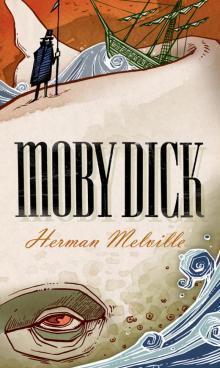 Moby Dick; Or, The Whale
Moby Dick; Or, The Whale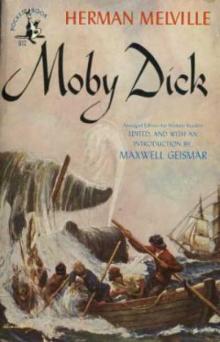 Moby Dick
Moby Dick Benito Cereno and Bartleby the Scrivener
Benito Cereno and Bartleby the Scrivener Israel Potter: His Fifty Years of Exile (Annotated Edition)
Israel Potter: His Fifty Years of Exile (Annotated Edition)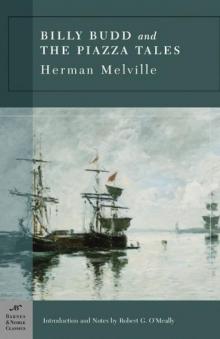 Billy Budd and the Piazza Tales
Billy Budd and the Piazza Tales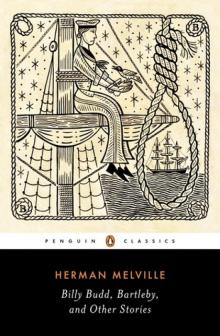 Billy Budd, Bartleby, and Other Stories
Billy Budd, Bartleby, and Other Stories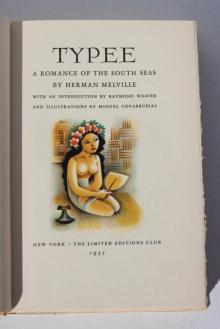 Typee: A Romance of the South Seas
Typee: A Romance of the South Seas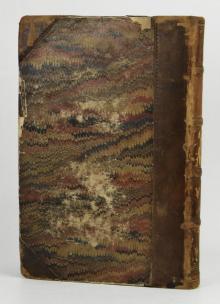 Omoo: Adventures in the South Seas
Omoo: Adventures in the South Seas White Jacket; Or, The World on a Man-of-War
White Jacket; Or, The World on a Man-of-War Redburn. His First Voyage
Redburn. His First Voyage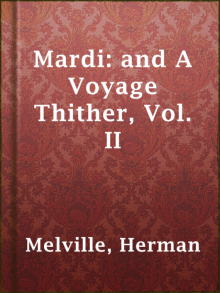 Mardi: and A Voyage Thither, Vol. II
Mardi: and A Voyage Thither, Vol. II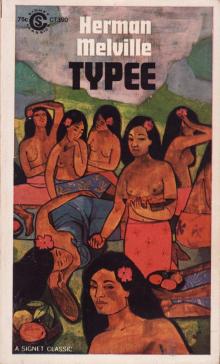 Typee
Typee The Paradise of Bachelors and the Tartarus of Maids
The Paradise of Bachelors and the Tartarus of Maids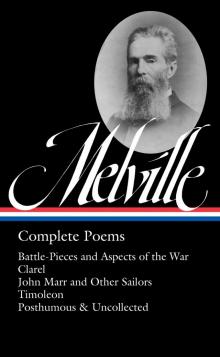 Herman Melville- Complete Poems
Herman Melville- Complete Poems Bartleby and Benito Cereno
Bartleby and Benito Cereno Moby-Dick (Barnes & Noble Classics Series)
Moby-Dick (Barnes & Noble Classics Series)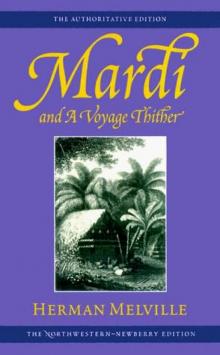 Mardi and a Voyage Thither
Mardi and a Voyage Thither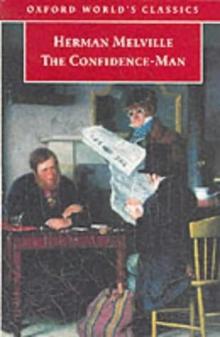 The Confidence-Man
The Confidence-Man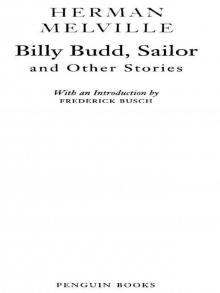 Billy Budd and Other Stories
Billy Budd and Other Stories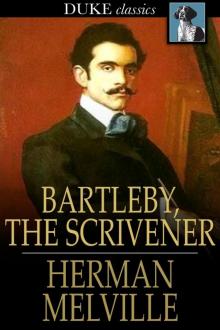 Bartleby the Scrivener
Bartleby the Scrivener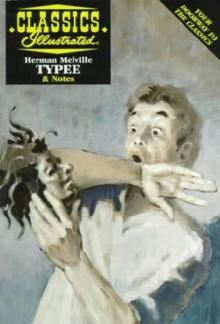 Typee: A Romance of the South Sea
Typee: A Romance of the South Sea I and My Chimney
I and My Chimney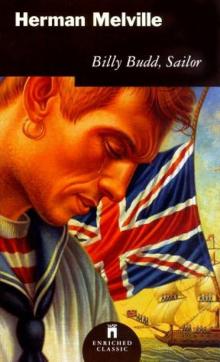 Billy Budd
Billy Budd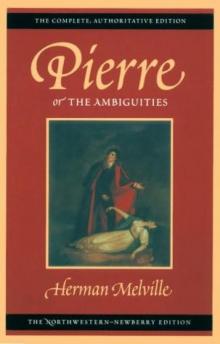 Pierre, Or the Ambiguities
Pierre, Or the Ambiguities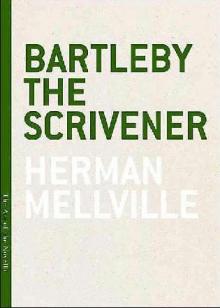 Bartleby, The Scrivener A Story of Wall-Street
Bartleby, The Scrivener A Story of Wall-Street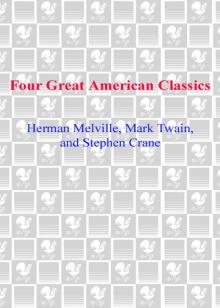 Four Great American Classics
Four Great American Classics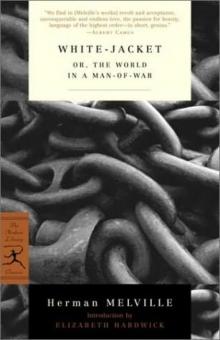 White Jacket or, The World on a Man-of-War
White Jacket or, The World on a Man-of-War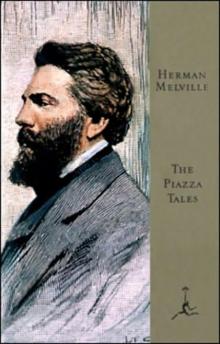 The Piazza Tales
The Piazza Tales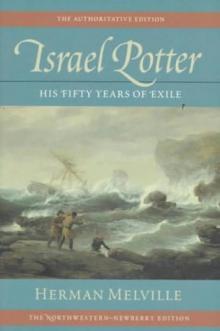 Israel Potter. Fifty Years of Exile
Israel Potter. Fifty Years of Exile